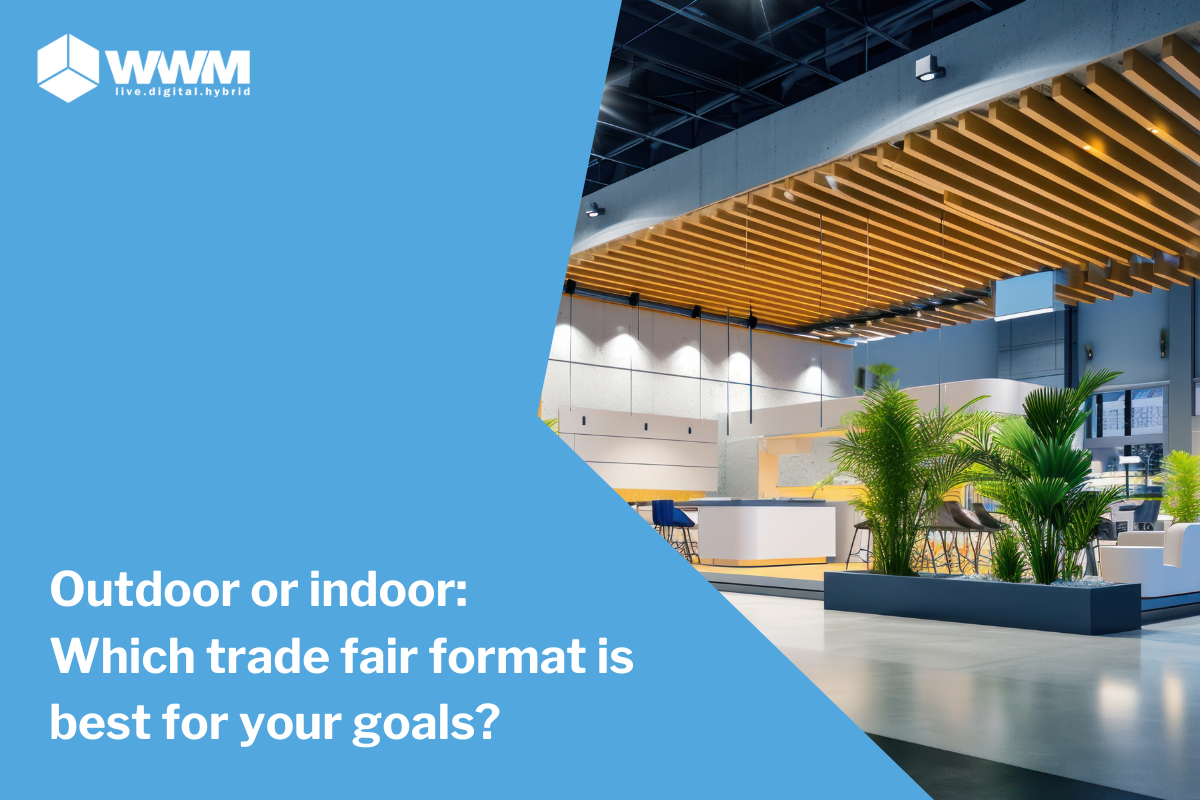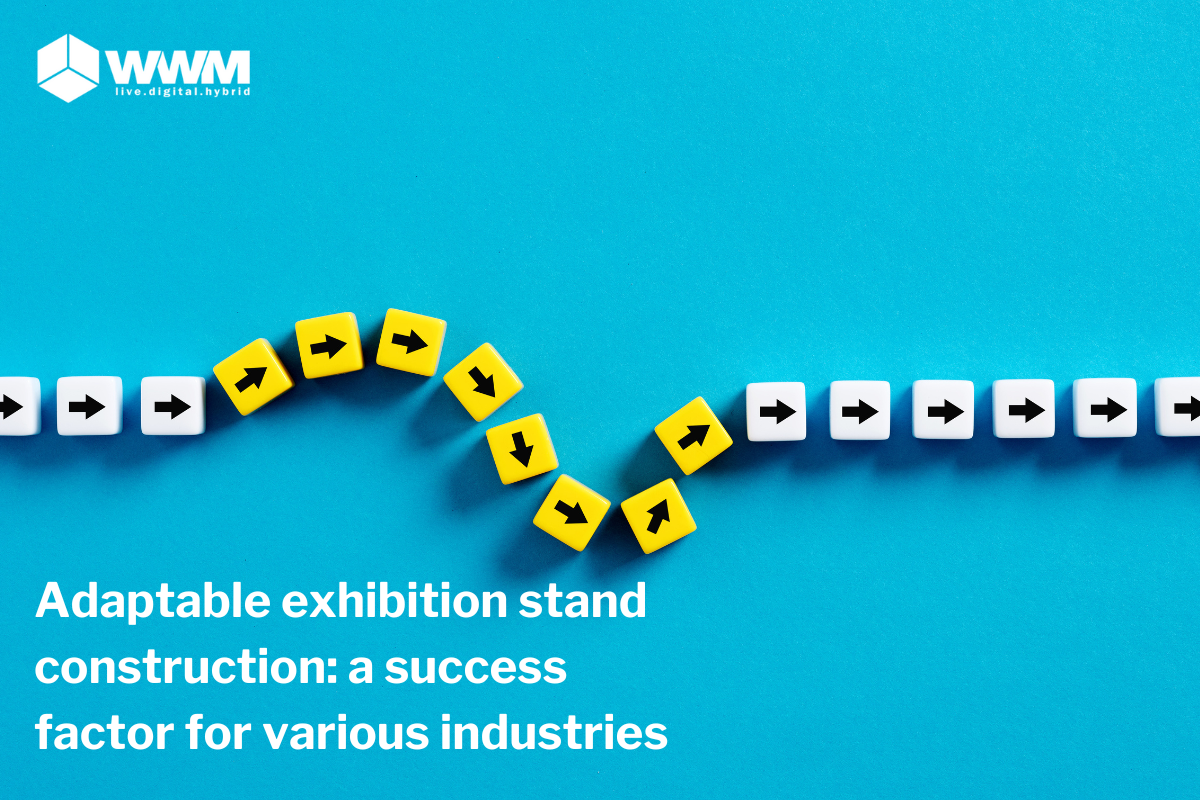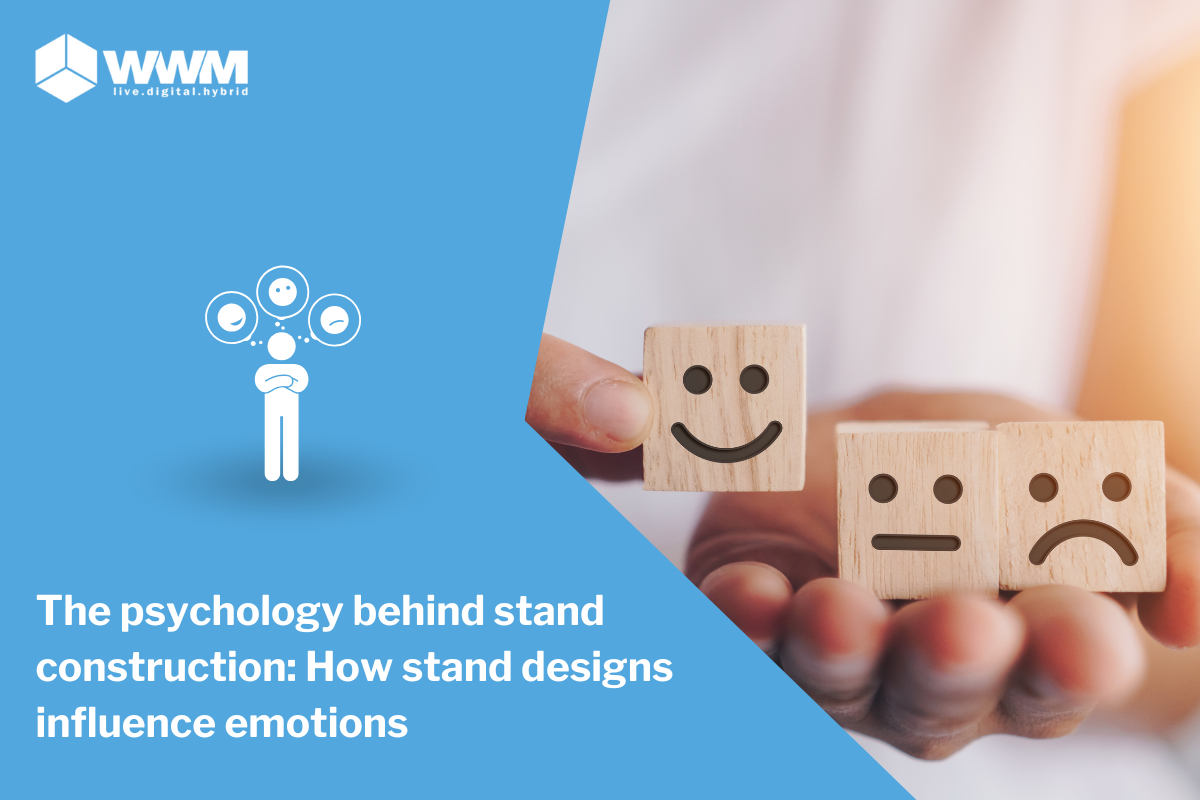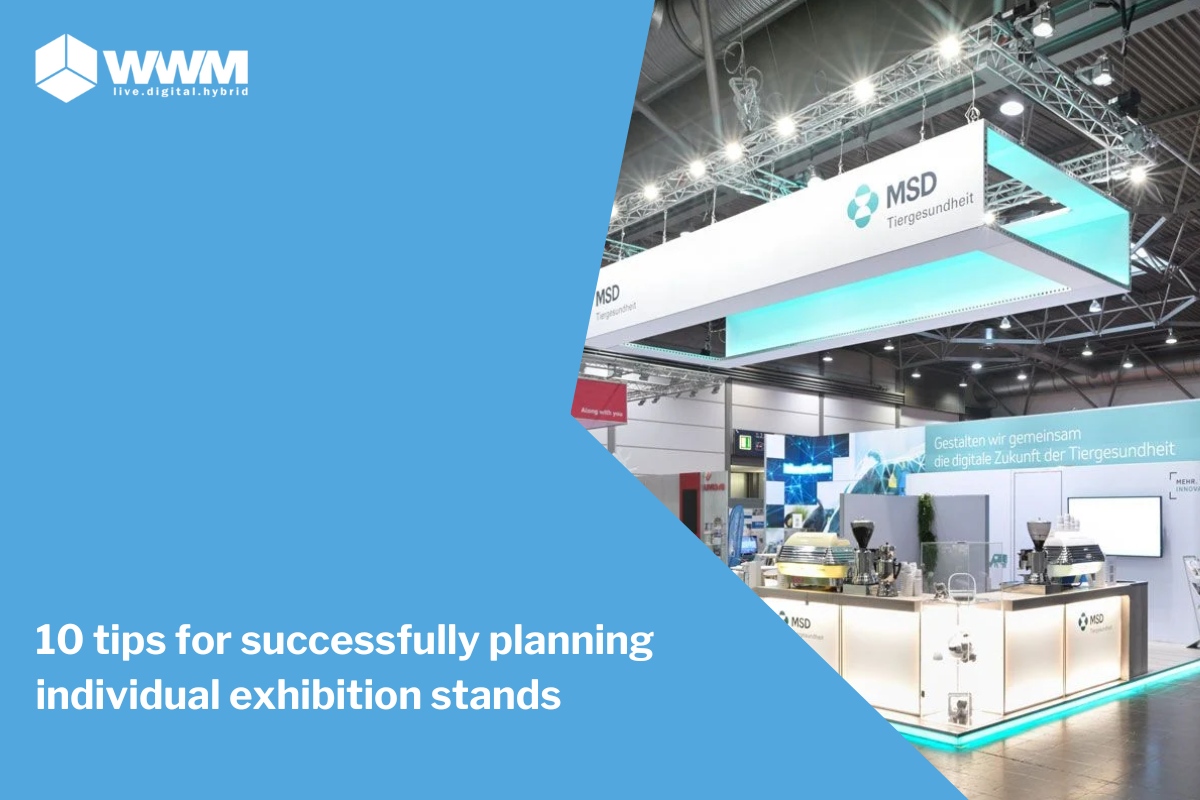Adaptable exhibition stand construction: a success factor for various industries
The art of exhibition stand construction in a diverse business world Exhibition stand design has evolved into an art form that is constantly evolving...
6 min read
Zarana Patel
:
Wednesday, 26. March 2025

The choice between an outdoor or indoor trade fair not only has an impact on your costs and logistical effort, but also significantly influences the way in which you make contact with your potential customers, partners and investors. Each type of trade fair offers unique opportunities for presenting your brand and requires customized planning.
With our expertise as stand builders, we support you in choosing the ideal trade fair form and the perfect stand for your objectives. Whether for large outdoor events or professional indoor trade fairs - we offer tailor-made solutions that present your brand in the best possible way and make your trade fair participation a success. We support you in choosing the right trade fair format, design and construction of your stand to take your trade fair presence to the next level with innovative, flexible and sustainable solutions.
Outdoor trade fairs take place in open, often spacious areas. These include large open-air grounds, stadiums or specially designed outdoor areas. This type of trade fair is often used by industries that rely on large areas or practical product presentations. Examples of this are agricultural, construction or automotive trade fairs, where machines, vehicles or outdoor products can be demonstrated directly.
Characteristics of an outdoor trade fair:
Indoor trade fairs take place in exhibition halls, congress centers or event rooms. They offer a controlled environment with stable conditions and are often the first choice for companies that prefer a professional and structured presentation. Sectors such as technology, industry, fashion or healthcare use this type of trade fair to present themselves in a concentrated setting.
Features of an indoor trade fair:
There are various challenges involved in planning a trade fair participation. Companies have to consider a variety of aspects to ensure that their trade fair appearance is successful and that the desired objectives are achieved.

Costs are often one of the most important factors when deciding to participate in a trade fair. A key question is: Is an outdoor or indoor trade fair more cost-efficient?
Outdoor: Outdoor trade fairs can be associated with unexpected additional costs. While indoor trade fairs usually come with fixed, easily calculable costs, companies have to plan for additional expenses for infrastructure such as tents, floor coverings or weatherproof structures at outdoor events. Adjustments due to weather conditions, such as renting heating systems or weather protection measures, can also put a strain on the budget.
Indoor: Indoor trade fairs, on the other hand, offer a calculable cost structure. Stand rental, technical connections and services such as lighting or internet are usually included in the trade fair packages. This makes it easier to plan and control the total costs in advance.
The logistical challenges vary greatly between outdoor and indoor trade fairs. One key question is: How time-consuming is it to set up and dismantle both types of trade fair?
Outdoor: Outdoor trade fairs often place higher demands on stand construction. As the stands are exposed to wind, rain or strong sunlight, weatherproof and robust constructions must be chosen. This not only means more planning effort, but often also more time for set-up and dismantling.
Indoor: At indoor trade fairs, the framework conditions are clearly defined by the exhibition hall. While this ensures a stable environment, limited space can be a challenge. Companies need to make the most of their stand space and find creative solutions to present their branding effectively. In addition, there are often strict regulations regarding stand heights, advertising materials or technical installations, which can make the set-up more complex.
Weather dependency is a decisive factor for outdoor trade fairs. Companies need to ask themselves: How do weather conditions affect an outdoor trade fair?
Outdoor: The weather is one of the most unpredictable factors at outdoor events. Strong winds can make exhibition stands unstable, rain can deter visitors or damage equipment, and extreme heat can have a negative impact on the quality of time spent on the exhibition grounds. These uncertainties require flexible planning and, if necessary, additional protective measures such as tents, canopies or air conditioning.
Indoor: Indoor trade fairs, on the other hand, offer a completely weather-independent environment. Companies can rely on trade fair operations running without external disruptions. This makes planning much easier and minimizes the risk of unexpected incidents, which must always be taken into account at outdoor events.
The type of trade fair has a major influence on how companies can interact with potential customers. The question is: Which type of trade fair offers better opportunities for interaction?
Outdoor: : Outdoor trade fairs often have a relaxed and experience-oriented atmosphere. Visitors can move around freely, discover different stations and try out products in an open environment. This type of trade fair is particularly suitable for B2C companies that want to create an emotional brand experience.
Indoor: Indoor trade fairs, on the other hand, are usually more formal and geared more towards business customers. The professional environment in an exhibition hall encourages focused discussions and targeted business leads. Companies that primarily target B2B customers benefit from the structured and well-organized atmosphere of an indoor trade fair.
The presentation of the brand is a key success factor for any trade fair participation. Companies need to ask themselves: What is the best way to showcase the brand?
Outdoor: Outdoor events offer more design freedom as there are fewer restrictions due to fixed hall structures. Companies can set up large, eye-catching installations or create interactive experiences that are particularly effective outdoors. However, all presentation materials must be weatherproof and flexible to withstand possible changes in the weather.
Indoor: Although indoor trade fairs have stricter specifications for stand sizes and advertising materials, they allow for more precise and technically sophisticated staging. High-quality displays, interactive LED walls or digital presentation tools can be easily integrated here. The controlled environment of an exhibition hall also ensures that lighting, acoustics and temperature can be used optimally for the presentation of the brand.
Both variants offer specific advantages and disadvantages, which vary depending on the target group, budget and organizational requirements. While outdoor trade fairs impress with large areas and a relaxed atmosphere, indoor trade fairs score points with predictable fixed costs and the fact that they can be held regardless of the weather.
.png?width=722&height=481&name=DE%20Perfekter%20Messeauftritt%20(1).png)
Our reusable stand elements minimize material waste and ensure long-term use. We use sustainable materials, avoid disposable components and develop resource-saving concepts that are both environmentally friendly and economical.
With WWM, you have a partner who will organize your trade fair participation efficiently, professionally and sustainably - regardless of whether you choose an indoor or outdoor trade fair.

The choice between an outdoor and an indoor trade fair depends on various factors:
Start planning the perfect trade fair with WWM now!
Let our experts advise you and find the optimal solution for your trade fair presence.

The art of exhibition stand construction in a diverse business world Exhibition stand design has evolved into an art form that is constantly evolving...

Trade fairs are vibrant melting pots of commerce and innovation, where companies and customers meet in a dynamic environment. But what is often...

A customized exhibition stand is the key to standing out at trade fairs and events. A well-planned stand makes it possible to present products and...